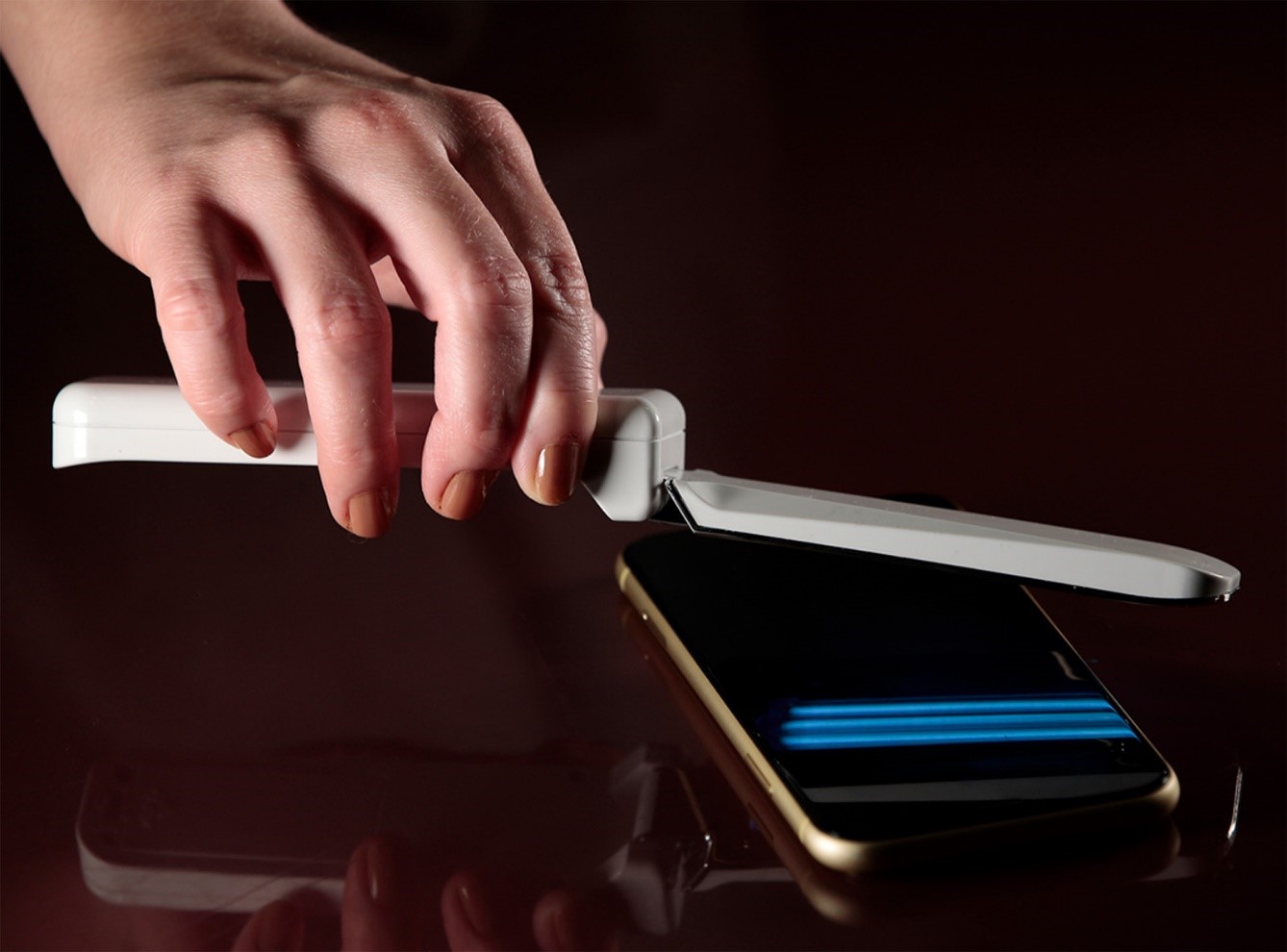Think Twice Before Using These UV Wands to Disinfect Surfaces
Health Letter, October 2022
By Fiona Lynn

Since the COVID-19 pandemic began more than two and a half years ago, many Americans have ramped up their efforts to rid their homes of potentially harmful bacteria and viruses. In addition to regular handwashing, hand sanitizers and disinfecting wipes and sprays, some people have turned to ultraviolet (UV) wands (handheld devices that give off UV-C radiation to disinfect surfaces) to keep themselves safe from contagious illnesses.
However, these wands come with significant risks for the user and anyone nearby; the Food and Drug Administration (FDA) on July 20, 2022, released a safety communication warning consumers that certain UV wands give off unsafe levels of radiation and can cause serious injuries to users and those around them (see Table below).[1]
Products Included in FDA’s Warning*
| Product Name | Manufacturer |
|---|---|
| Safe•T•Lite | Max‐lux Corporation |
| OttLite Rechargeable UVC Disinfecting Wand, model: UV10002M | OttLite Technologies Inc. |
| UVILIZER Flip, model: SG-153 | In My Bathroom LLC, “dba” IMB |
| Portable UV Light Wand Sterilizer | In My Bathroom LLC, “dba” IMB |
| Ultraviolet Sterilamp, model: PURPLEGLOW | Vanelc |
| Sharper Image® UV Sanitizing Portable Wand, model: 101362 | MerchSource LLC |
| SurfaceSoap UV | PhonoSoap LLC |
| Magic UV Light SanitizerTM | Magic UV Light Sanitizer |
*The FDA may remove products from this list as manufacturers take corrective actions and add products as new unsafe wands are discovered. For an updated list of affected products, check here: https://www.fda.gov/medical-devices/safety-communications/do-not-use-ultraviolet-uv-wands-give-unsafe-levels-radiation-fda-safety-communication.
Many of these wands are advertised to disinfect surfaces in seconds, a clear indicator that they emit unsafe levels of radiation. Some of the UV wands that the FDA tested give off as much as 3,000-fold more UV-C radiation at a distance of approximately two inches than the recommended limit.
Sunlight is the most common source of UV radiation exposure. There are three main types of UV rays: UV-A, UV-B and UV-C. UV-C radiation has the highest energy of the three types. However, the ozone layer in the atmosphere blocks UV-C radiation from the sun, preventing it from reaching Earth’s surface. Thus, people can only be exposed to UV-C rays from artificial sources like UV lamps and wands.
The radiation these UV wands produce can harm the user and anyone else nearby. They can cause serious injuries to the skin and eyes, even after just a few seconds of exposure. UV-C–induced skin injuries resemble severe sunburn. Eye exposure to UV-C causes photokeratitis, which is comparable to sunburn of the corneas. Symptoms of photokeratitis may include pain or redness in the eyes, watery eyes, blurred vision, light sensitivity, gritty sensation in the eyes, seeing halos and headaches.
The UV wands cited in the FDA’s safety communication also do not have the necessary safety features to keep people safe from injury, nor do they come with adequate safety instructions or risk information. For these reasons, the FDA is warning consumers not to use these UV wands to disinfect surfaces and to use safer products, such as disinfecting wipes and sprays, instead.
The FDA sent Notification of Defect Letters to each manufacturer listed in the Table and is working with them to ensure corrective actions are taken.
If you or someone in your household has experienced a potentially harmful exposure to the radiation from a UV wand, you may submit the Accidental Radiation Occurrence Report form to the FDA’s Center for Devices and Radiological Health. If you believe a UV wand that is not listed in the Table above may be giving off unsafe levels of radiation, you may submit an Allegations of Regulatory Misconduct form (https://www.fda.gov/medical-devices/reporting-allegations-regulatory-misconduct/allegations-regulatory-misconduct-form) to the FDA.
Do not resort to using these potentially dangerous UV wands to disinfect surfaces in your home or elsewhere. If you are concerned about harmful bacteria and viruses, there are a number of steps you can take to keep yourself and your loved ones safe, including regular handwashing with soap and warm water (or using hand sanitizer when these are not available), using disinfecting wipes and sprays on high-touch surfaces (such as doorknobs and light switches), and staying up to date with your vaccines.
References
[1] https://www.fda.gov/medical-devices/safety-communications/do-not-use-ultraviolet-uv-wands-give-unsafe-levels-radiation-fda-safety-communication